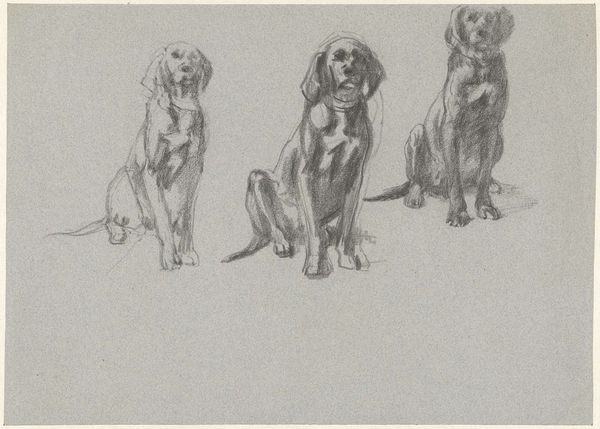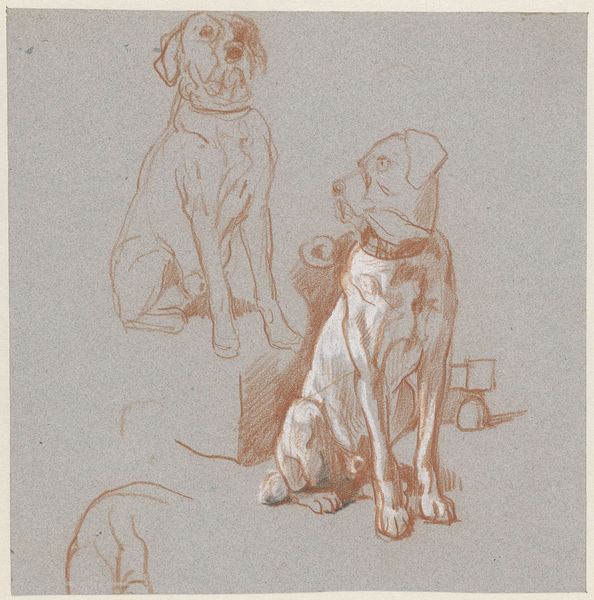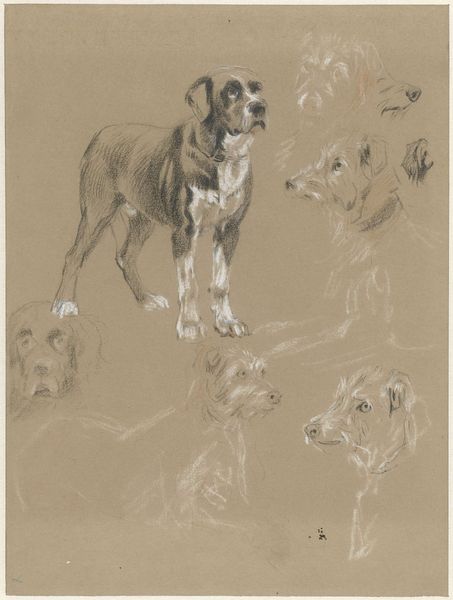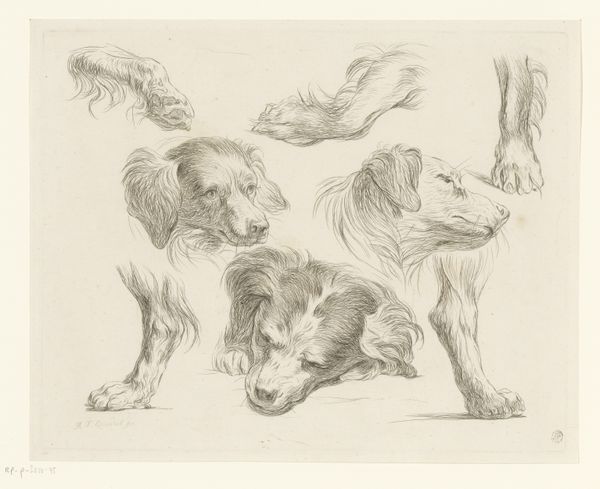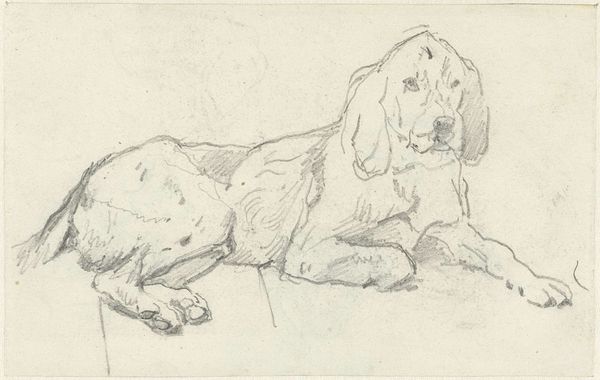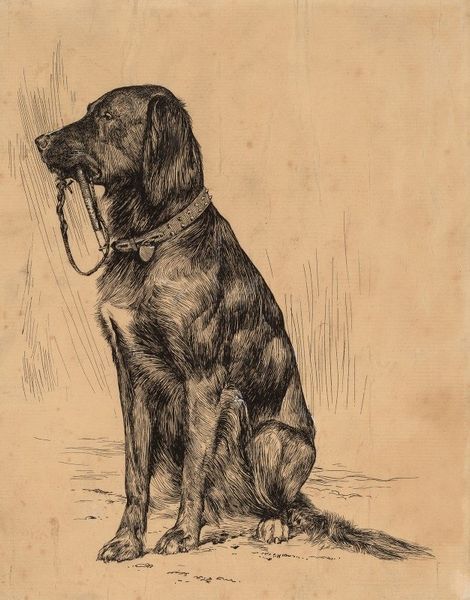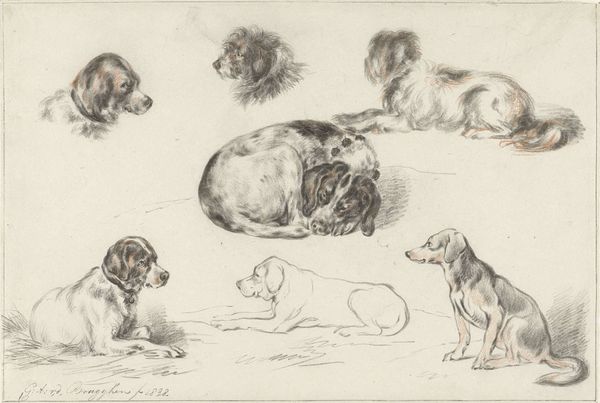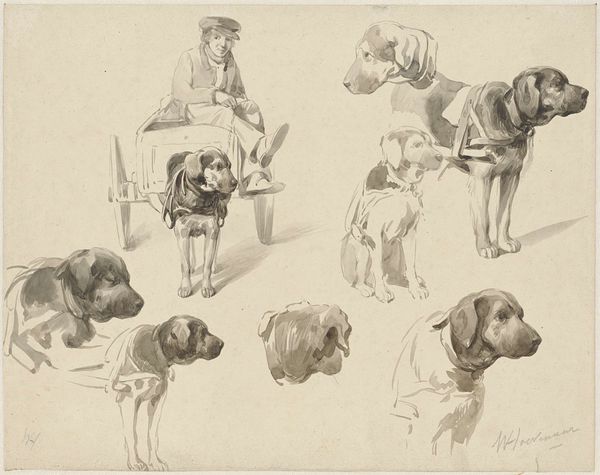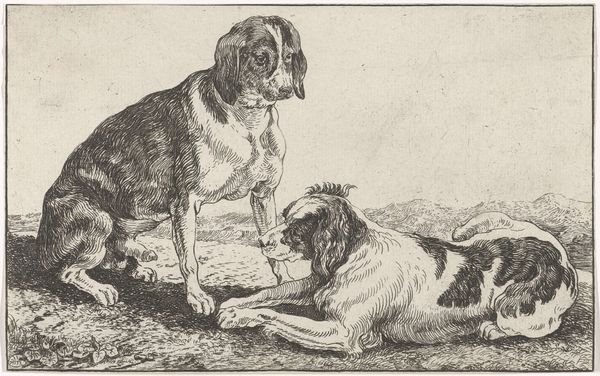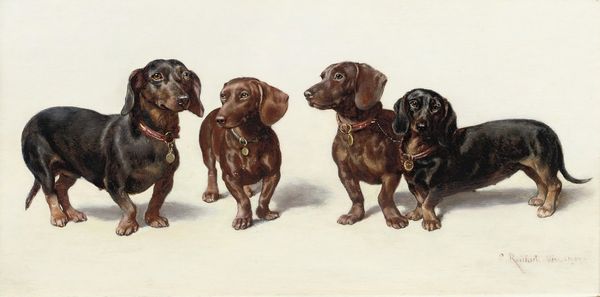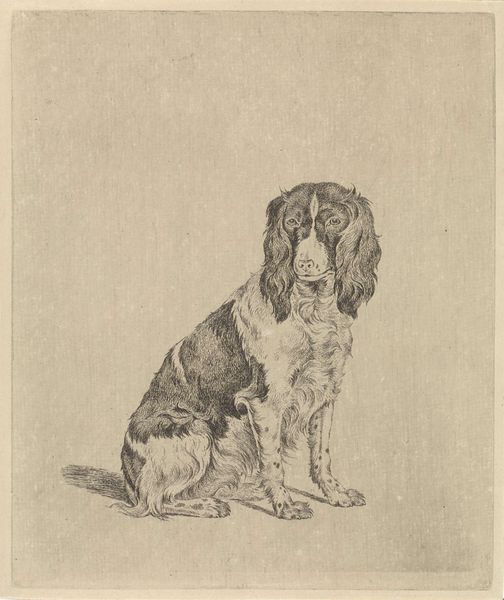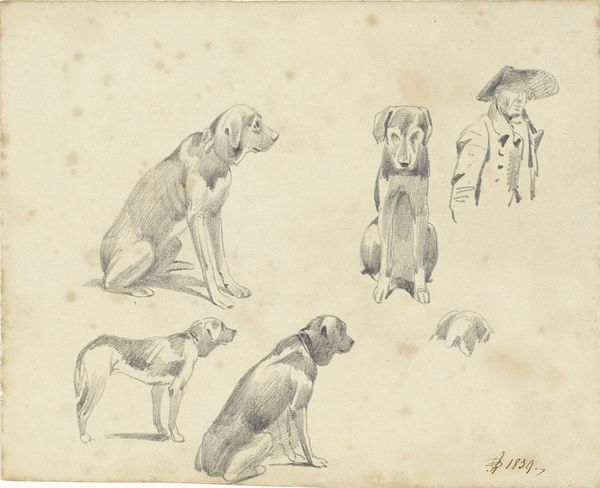
drawing, pencil
#
portrait
#
drawing
#
dog
#
pencil drawing
#
pencil
#
realism
Dimensions: height 155 mm, width 270 mm
Copyright: Rijks Museum: Open Domain
Curator: Before us, we have “Three Studies of a Seated Dog,” a pencil drawing likely completed between 1821 and 1886 by Guillaume Anne van der Brugghen. What are your initial thoughts? Editor: The texture! There’s such a tactile quality achieved with simple pencil strokes. I'm struck by the almost stoic stillness radiating from these canine figures. Dogs, historically, symbolize loyalty; I wonder what else these images may signify. Curator: Absolutely, their steadfast gazes evoke reliability. I see how one can view the symbolism of loyalty, which connects to human expectations and impositions on animals. Zooming in, there is a variation in detail given to each of the three dogs that is significant to a deeper analysis. Consider, who defines that symbolic value and for whose benefit? Editor: Each canine depiction shows subtle differences, almost capturing changes in expression or even the passage of time. Van der Brugghen presents a unique view here. A sense of observation that is quiet and comforting; were dogs historically just beasts of burden, and do we see shifts toward domesticated status as things changed culturally? Curator: The realism style complicates our analysis too, wouldn't you agree? While realistic, we see here no trappings of wealth like luxurious collars, only dogs with subtle differences; this places emphasis on each subject in what could be an acknowledgement of equality and respect for individual life. We see a political act here that might go unnoticed. Editor: You're right to focus our thoughts beyond domesticity! What else do you see in the image that might connect with such themes of human relations to equality or oppression? The visual language of dogs, of their gaze, often relies on dependence; but there's also alertness. Perhaps each portrait is also an active participant within the household or its landscape. Curator: These images provide a space to question and investigate power dynamics in everyday life through familiar imagery, creating accessibility. A challenge to how art typically portrays similar subject matter to promote inequitable values. Editor: Indeed. Brugghen's focus on the individuality and quiet presence prompts reflection beyond immediate impressions of loyalty or servitude, allowing for critical discussion and engagement. Curator: It leaves you questioning much more than when you began, as powerful artwork should. Editor: Definitely, this understated piece speaks volumes.
Comments
No comments
Be the first to comment and join the conversation on the ultimate creative platform.
